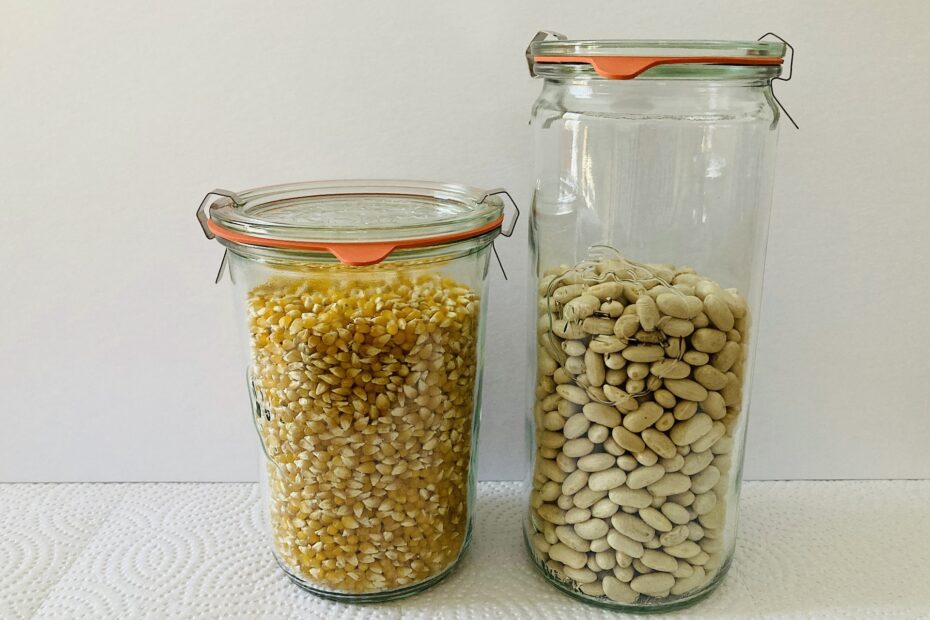Paring back has long been on my agenda; and this week pantry organization tops my list!
We all know it’s time to tackle a cabinet overhaul when we unearth a few expired items from its back corners. Or when we’re at the grocery store and have to purchase doubles of an expensive ingredient because we’re unsure whether or not we have it at home. And, finally, upon opening our pantry doors, we’re faced with an unappealing pop-art presentation of cans, bottles, boxes and bags.
Today, I’ll offer some ideas on basic, functional pantry organization. Come bloom with me!
What is Functional Pantry Organization?
First I encourage you to consider what your definition of functionality is. Merriam Webster defines functional as: “designed or developed chiefly from the point of view of use.“ I quite like this definition. How do you use your cabinet or pantry? How can it be organized/laid out so it is actually working for you? I made a list to help me prioritize my needs. Yours will look different depending on how you use your space and work in your kitchen.
- Organize items by category: (paper goods, grains, cereals, canned goods, baking supplies, etc.)
- Shelf height adjustment for maximum use of space.
- Unobstructed view of items on each shelf.
- Frequently used items front and center. (Least accessed or overstock items stored up high or down low.)
- Pleasant to look at when doors are open.
- Easy to maintain.
Glass Storage Containers
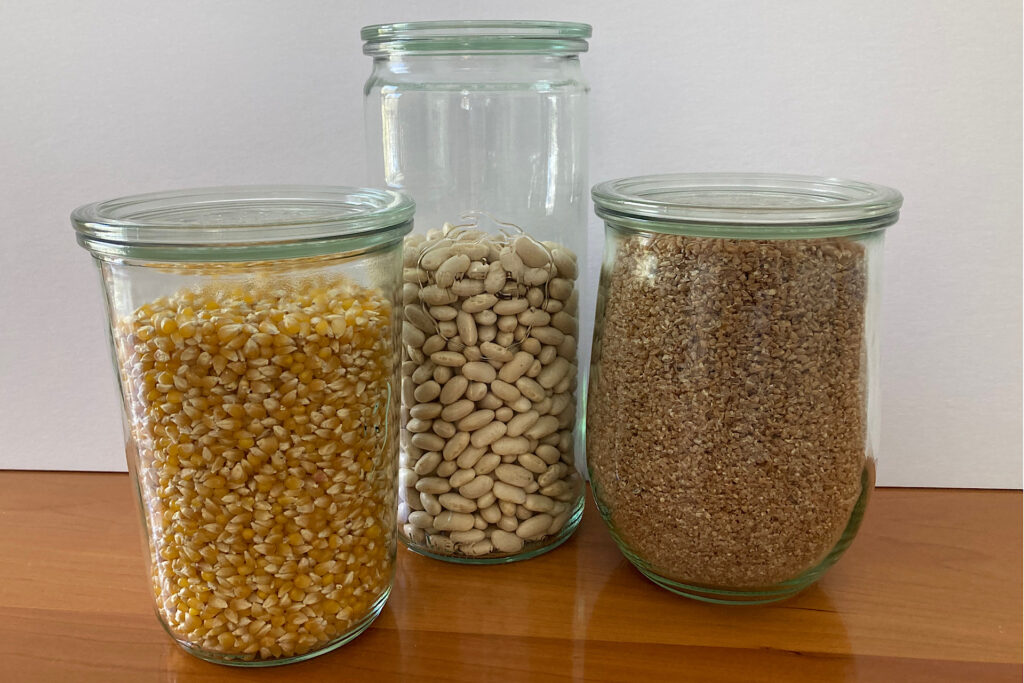
I’m a fan of Weck jars, but I also use mason jars for storage. Given the choice, I prefer the clean look of Weck glass storage containers. They come in various sizes and hit my “visually appealing” goal above. They are dishwasher-safe, so it is easy to open a bag, empty the contents into the jar, and when finished, give them a quick clean-up in the washer.
Weck jars will also keep items fresh; each jar comes with a ring seal and clamp. If you are storing something that doesn’t require a seal, the glass lid has a lip that nestles nicely into the jar rim. One disclaimer here: When scrolling pantry organization on social media, I love to see photos of beautifully labeled glass jars. I have to remind myself, however, that one of my pantry organization goals is “maintenance-free;” prompting me to forego labeling. In truth, a clean, glass surface is also quite nice. If I do want to remember a vendor for re-purchase or the specifics of an item, I snip a tag from its packaging with scissors and tape it to the bottom of the jar. Just know, if you choose to label your glass containers, I will still admire you on Instagram!
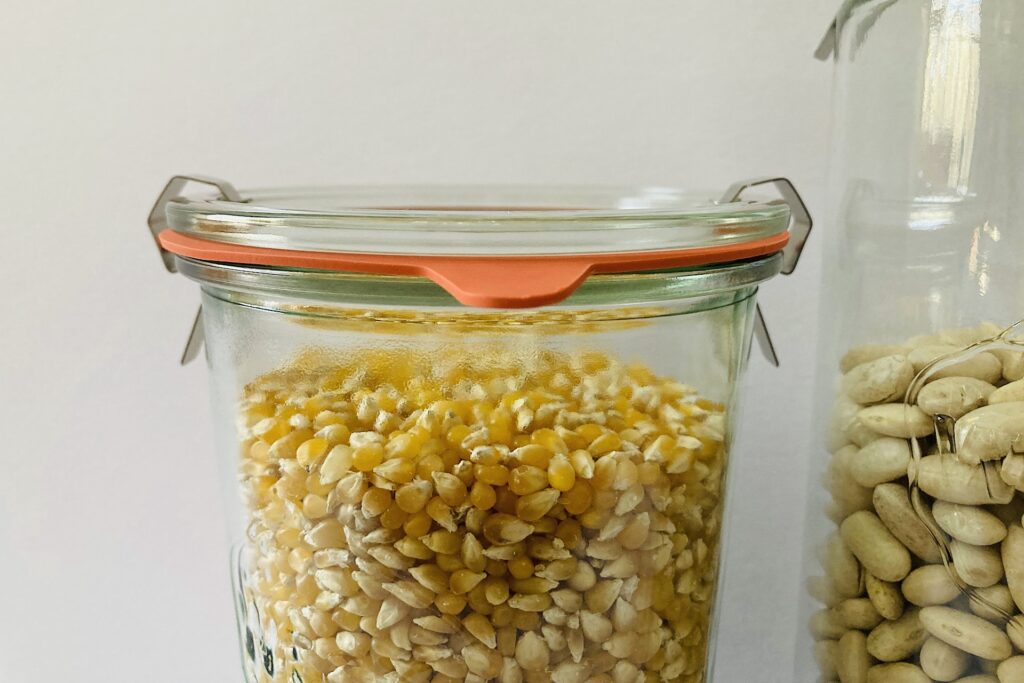
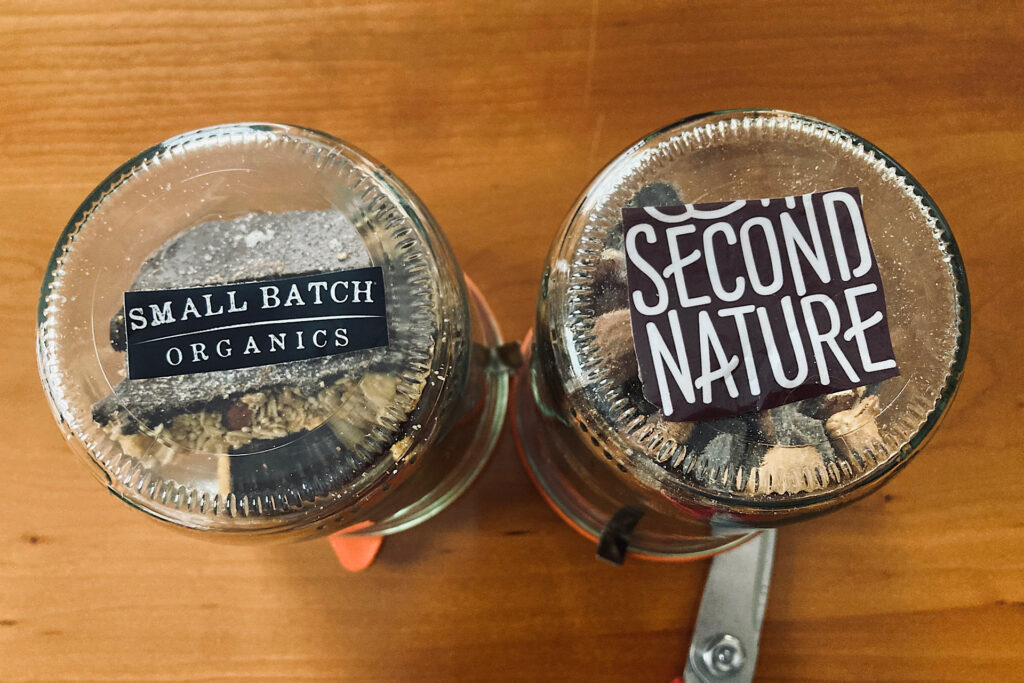
Kitchen Turntables
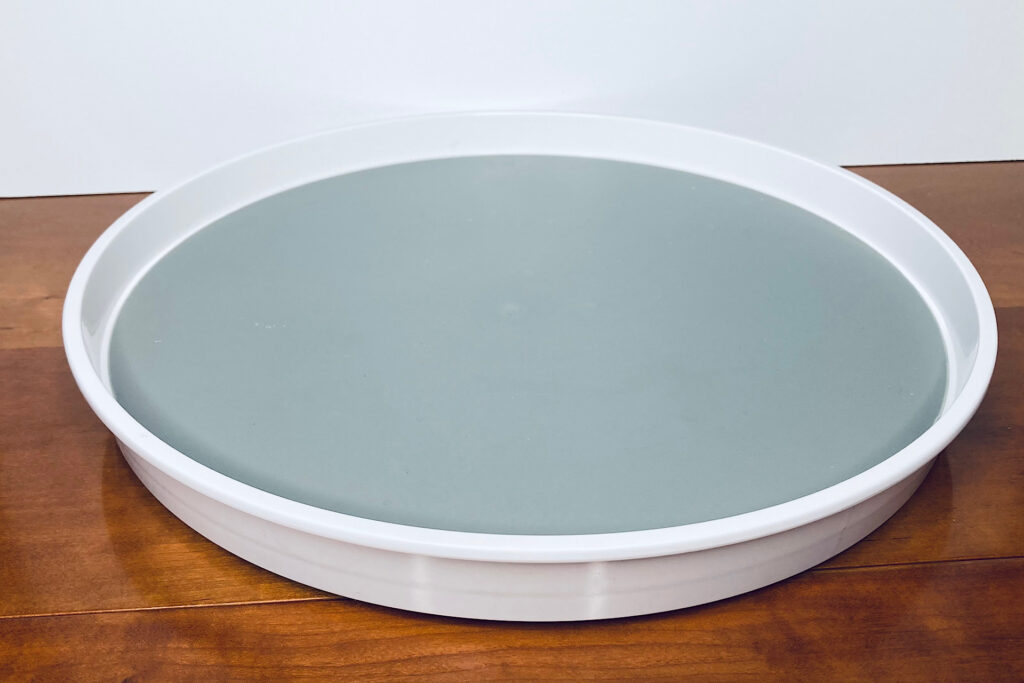
Kitchen turntables, or “Lazy Susans” have been around forever and can feel a little old-school when it comes to pantry organization. They do, however, meet the goal of being able to see everything on a shelf, without wasting valuable space. Depending on your needs, they come in a variety of styles from flat discs to tall, acrylic towers with sectioned storage units.
There are a few ways to organize items on a kitchen turntable for easy viewing. By placing taller items in the middle, they can be seen on a full rotation. The outer items can be placed label-side out all the way around the tray; that way, they are easily identifiable as you spin the disc. Before purchasing a kitchen turntable, make sure you measure your shelf depth to ensure the unit can turn freely and will not scrape against the back of your cabinet or pantry wall.
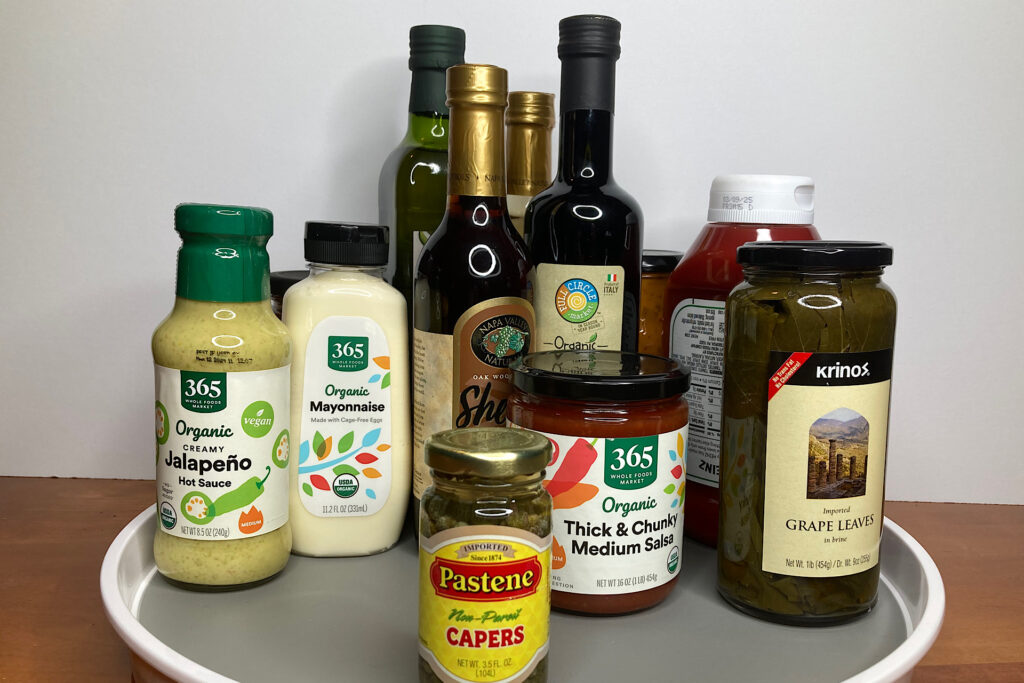

Bi-Level Storage
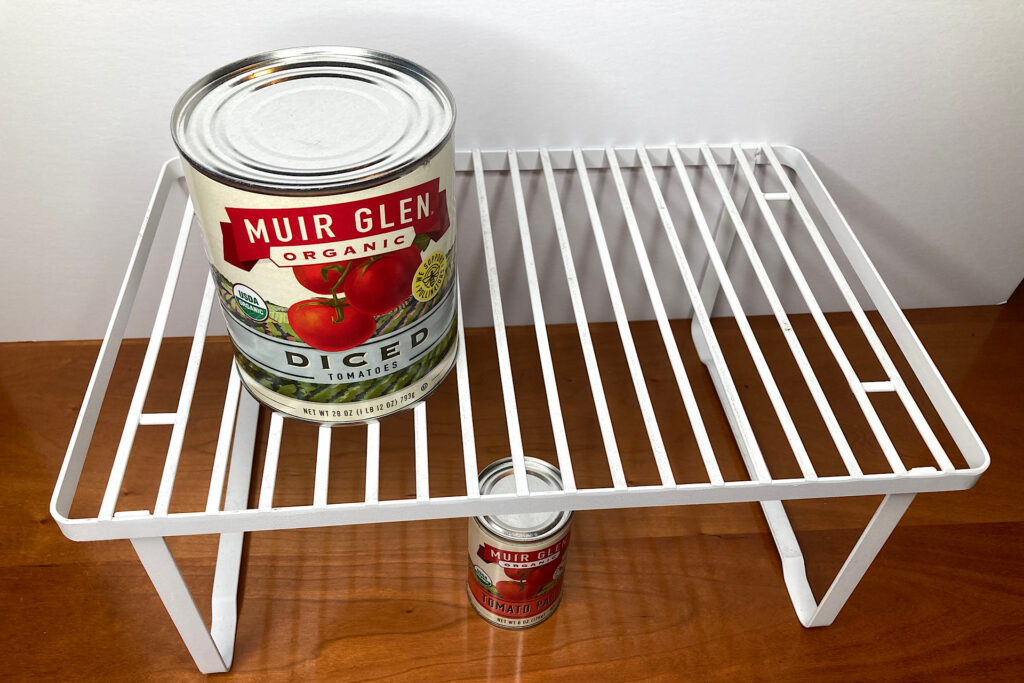
When it comes to pantry organization, these shelving units are an excellent choice for canned goods. Typically, canned items are not very tall and we disregard the space above them. With these portable shelves, you can double storage while still being able to see and easily access items you need. This taps into that “maximizing space” goal.
In our household, we don’t typically stock many canned fruits and vegetables. We do make an exception for canned tomatoes. We typically create a weekly sauce, pizza topping, or main dish using canned varieties of tomatoes during the winter months. These storage shelves keep the sauces, pastes and a small variety of other canned and packaged goods neat and orderly. I also use one for the section of my pantry that houses breads, jams and nut butters. If you maintain a large stock of canned goods, you may make great use of several of these bi-level storage shelves in your pantry organization plan.
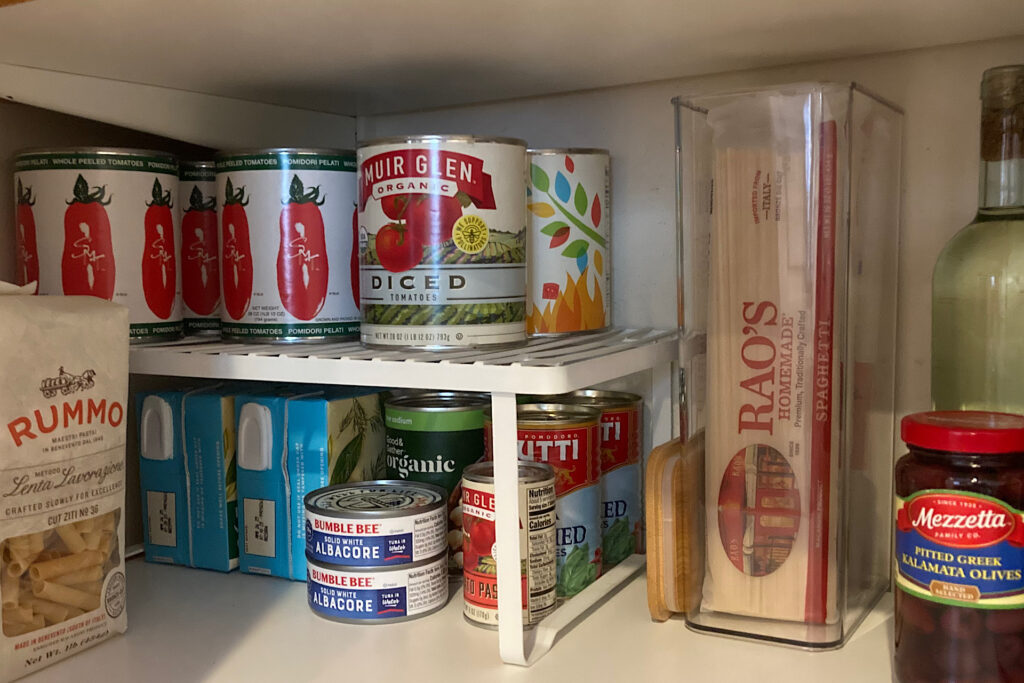
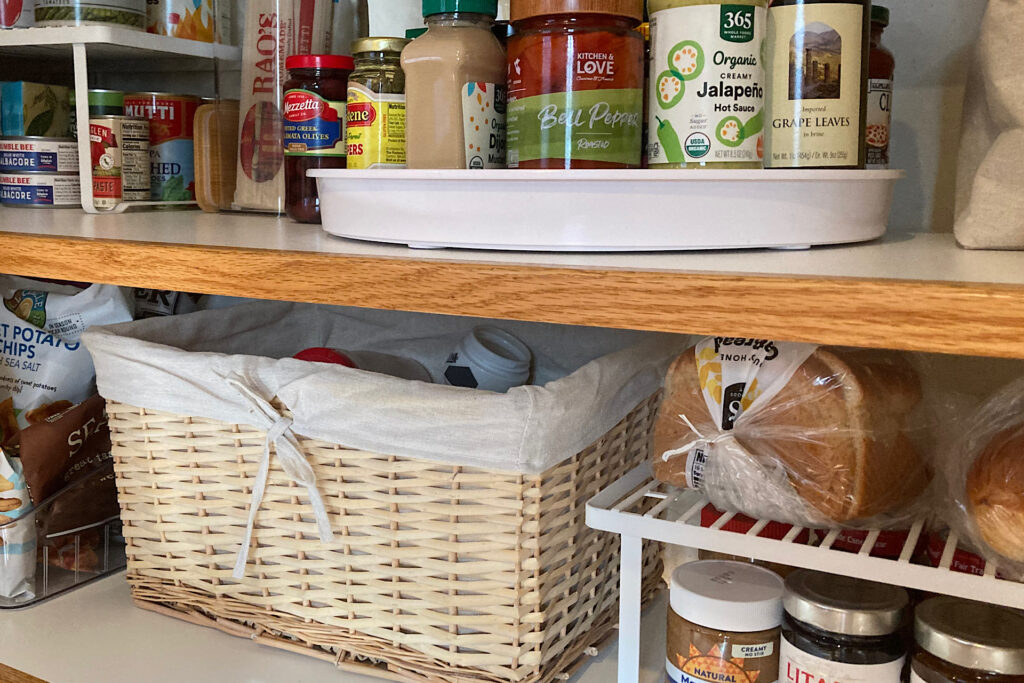
Containers
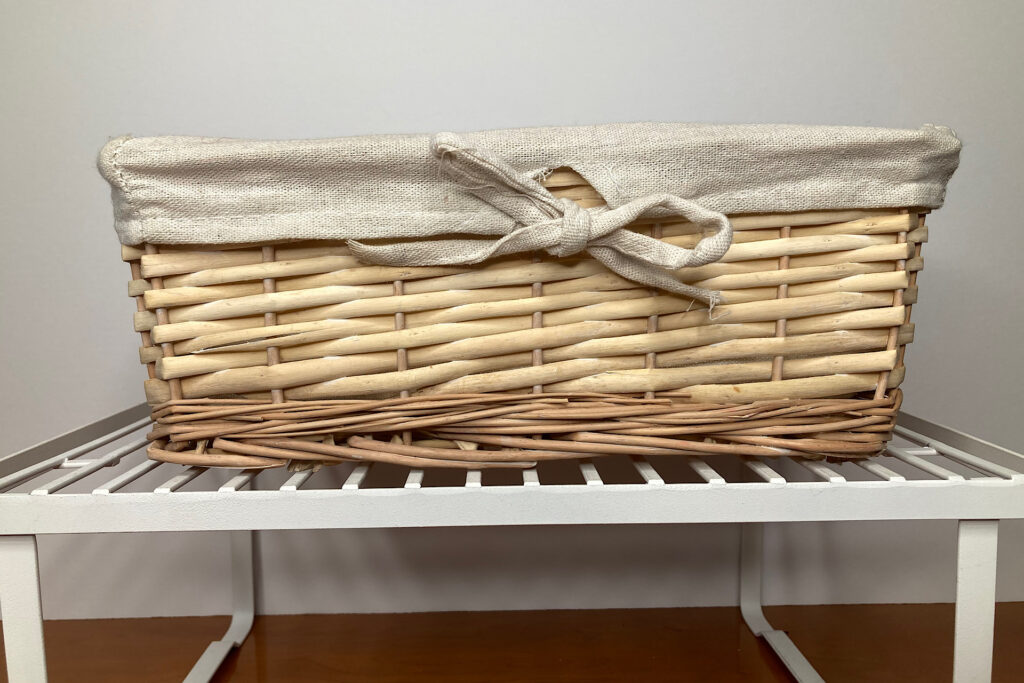
This is where you can have some fun and express yourself a little. There are plenty of storage container options to fit every taste; making the goal of categorizing items easy. For example, if you are a baker, having flour, sugar, chocolate chips, baking soda and flour handy in one tote that transports from cabinet to countertop might be just what you need.
If baskets are too much of a rustic feel for you, there are clear acrylic containers that are sleeker and make a clean statement. I use a pasta container to hold my unopened bags of spaghetti – it keeps them neater and when they stand upright, they take up less shelf space. These containers also work great for cereals. Another acrylic item I recommend for pantry organization are bins with wheels set on the back (see the photo of the potato chips below). You can lift up the lip on the front of the container and roll it forward on your shelving to access the contents.
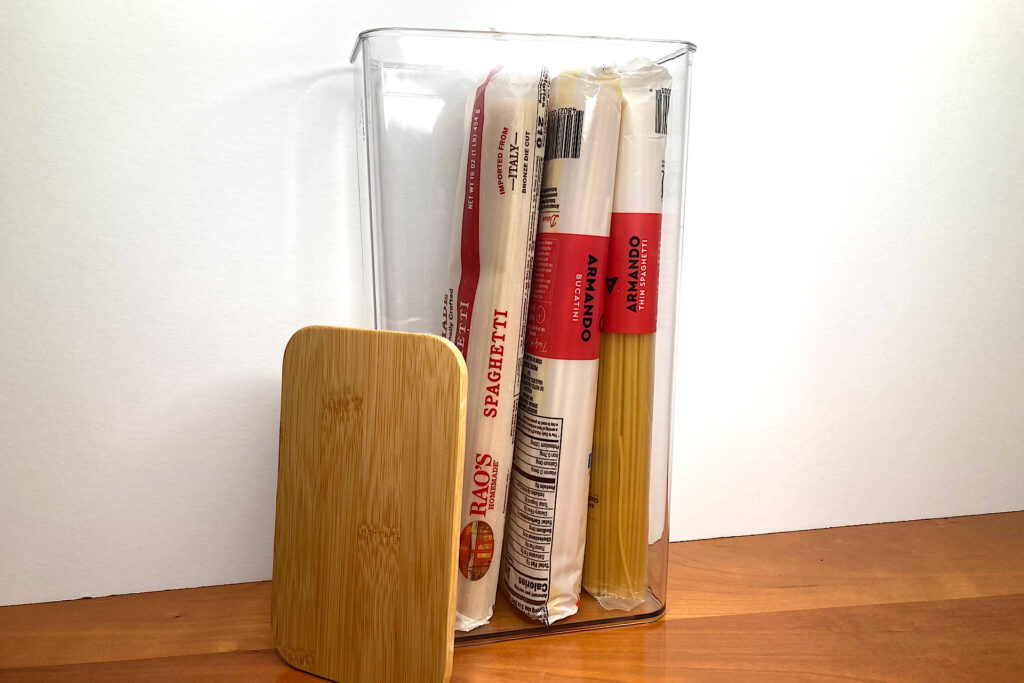
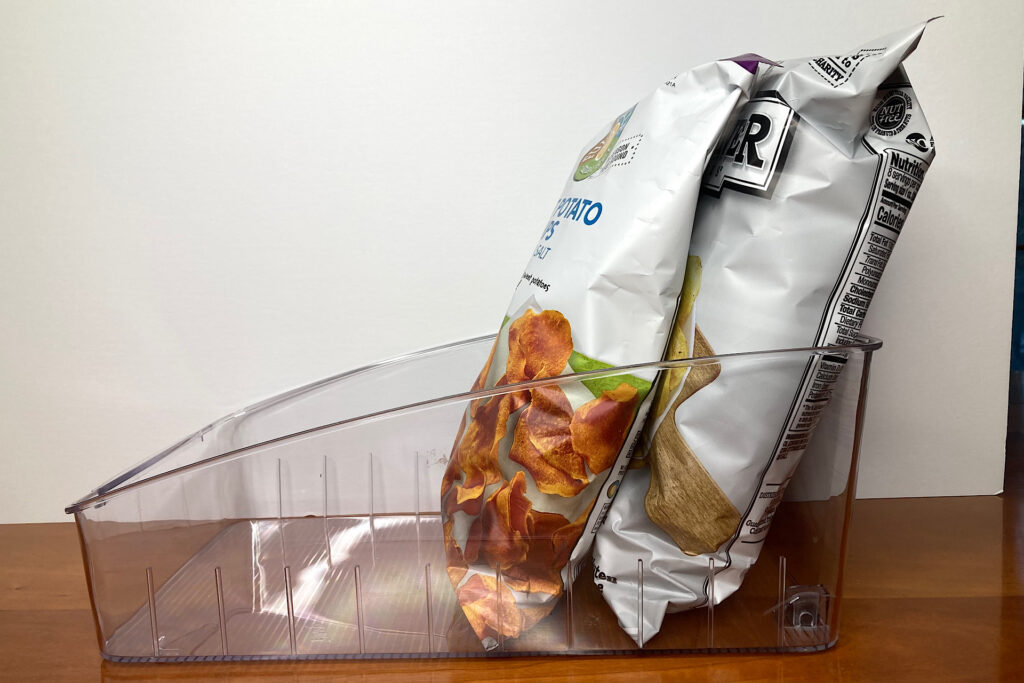
Putting it Together
After you’ve considered containers and storage solutions that may serve your pantry organization goals, it’s time to put it all together. I happen to have a very large pantry in the center of our kitchen. The contractor who built our home originally intended the space to house a washer and dryer. We chose not to make laundry central to the kitchen area and moved those units elsewhere. A large pantry offers amazing storage solutions, but can equally be a large, embarrassing eyesore if not maintained. (Especially when guests offer to help with meal prep!)
If I were using cabinets, I would still use these same strategies – the difference being they would be broken up into smaller configurations.
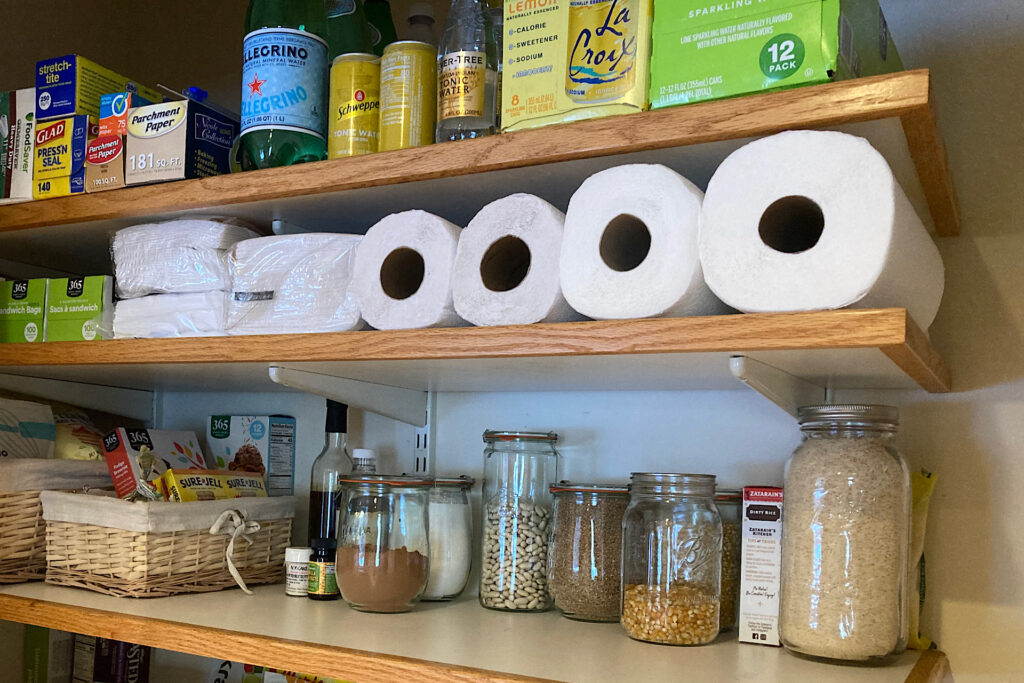
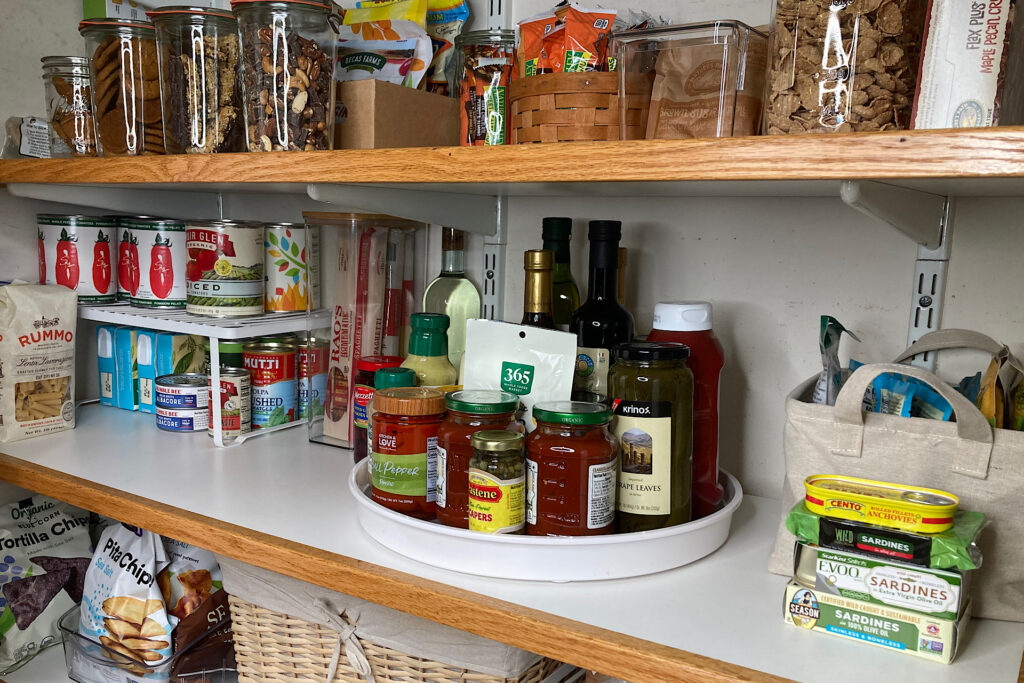
- I started by following my goal of placing least-used items on the top two shelves. This includes an overstock of sparkling water and extra boxes of parchment, foil and food storage bags. Fitting into this category is also a stock of paper goods such as napkins and paper towels. If you’re not using these items every day, they are not much of a bother to reach for when an item runs out in the fridge, drawer or countertop.
- The two mid-level shelves were reserved for the items I use all the time for meal prep. These would be grains, cereals, snack items, canned goods, sauces, oils, vinegars and condiments. They are arranged for easy viewing and quick access.
- The bottom shelf houses breads, jam and nut butters along with potato and corn chips. In the center, there is a basket that contains water bottles for cycling, walks and work.
- The key here is to assess your space, consider what you use most often and where it should be placed for maximum efficiency. We’ll all have a different set-up based on our needs and it can be tweaked after it has served you for a while.
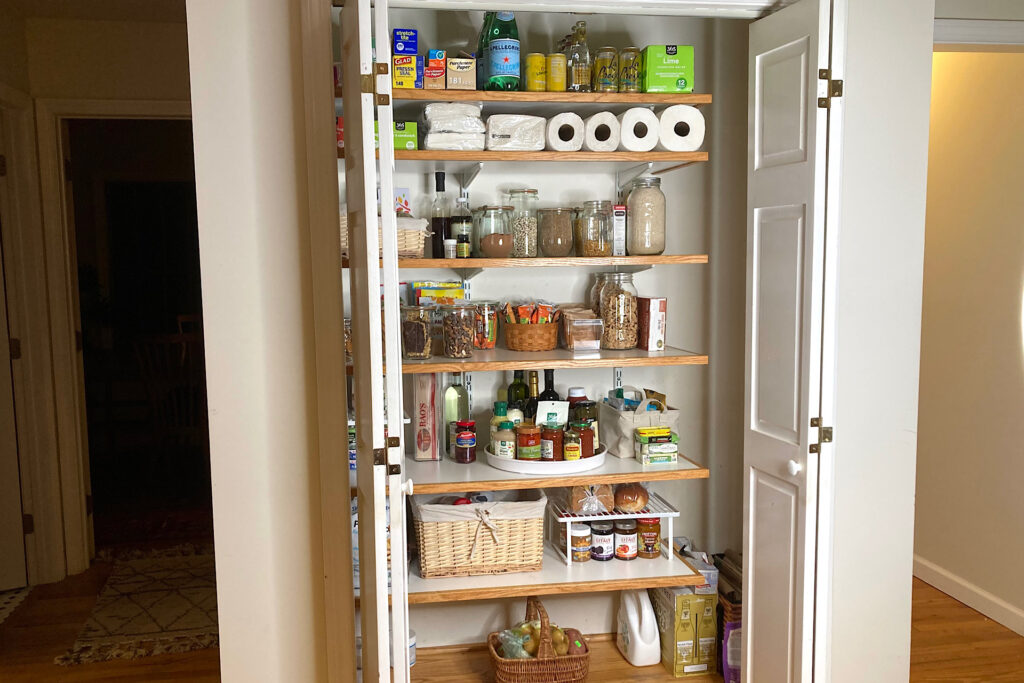
Related Posts
I hope you enjoyed this pantry organization post and are inspired to consider what might work in your personal space. Let me know what serves you best!
In the meantime, you may also enjoy these articles:
